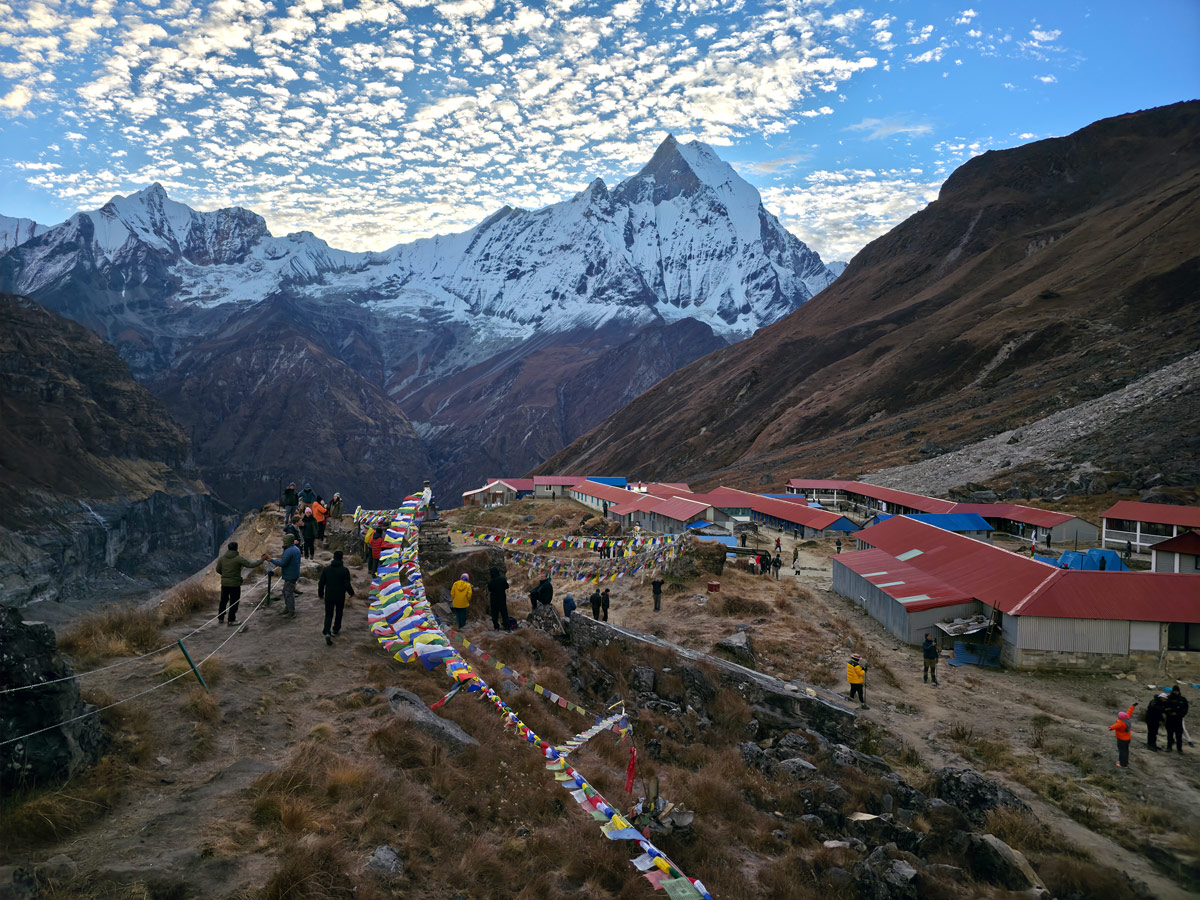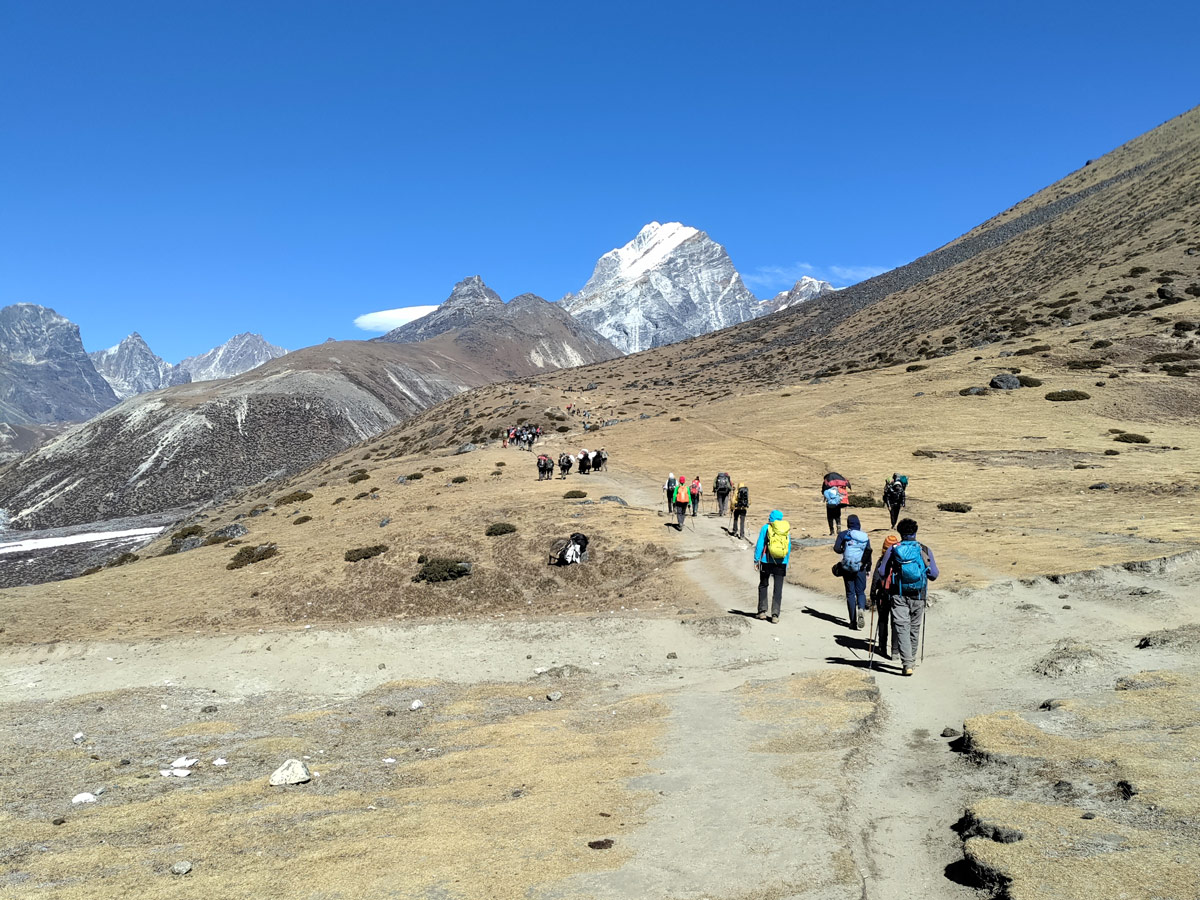Nestled in the heart of Nepal, the Annapurna region is one of the most famous parts of Nepal and is referred to as trekkers paradise as it is home to several iconic and stunning trekking routes of Nepal.
Beyond the trekking experiences, this region is also home to some of the most stunning landscapes in the world. Along these stunning landscapes lie some of the most unique viewpoints.
These viewpoints in the Annapurna region are what allow you to pause and experience the beauty that lies in the panoramic vistas of snow-capped peaks, rolling hills, lush forests, and traditional villages.
Besides providing unforgettable sunrise and sunset views, these viewpoints also provide you with the perfect opportunities for photography and quiet reflection. Therefore, in this blog, we have compiled some of the best viewpoints in Annapurna region.
What Makes a Great Viewpoint in the Himalayas?
Before we delve into the details of the viewpoint in the Annapurna region, lets figure out what exactly makes a location a great viewpoint in the Himalayas as several factors contribute to it.
A great Himalayan viewpoint is more than just a spot with a view. The quality of the view and the ease by which you can access the viewpoint also matters. For an instance, Mt. Everest would make for the best viewpoint, but it is not accessible for all!
Having said that, it is not necessary that viewpoints that are difficult to access are not worth it. Some viewpoints are reachable within a few hours, while others require multi-day treks. Both can be rewarding depending on your physical ability and travel time.
The main criteria for being a Himalayan viewpoint is that one should get clear, unobstructed 360-degree views of the iconic peaks, deep valleys, and everything that the region has to offer.
Higher altitude areas often provide more expansive views of the surrounding landscape. Based on the strategic positioning of the viewpoint, for example it could be on a ridge, pass, or open hillside, also further enhances visibility.
Another thing that further adds to the beauty of this viewpoint is its potential to experience the true beauty of the golden hours, i.e. sunrise and sunset. The play of light during dawn and dusk can transform it into an even more magical experience.
The location of the viewpoint in terms of cultural exposure also adds to its value. Viewpoints near traditional villages or monasteries often blend cultural richness with natural beauty.
Iconic Viewpoints of the Annapurna Region
The Annapurna region is home to several viewpoints which allow you to experience the true grandeur of the region. These include high altitude mountain passes, ridges, base camps, and other locations. Some of them are given below:
Poon Hill
Located at an altitude of merely 3,210 meters near the village of Ghorepani, Poonhill is arguably the most accessible and popular viewpoint in the Annapurna region.
It is the crowning jewel of the Ghorepani Poonhill Trek which is famous for its short duration of 4 to 7 days. Even people with limited or no prior trekking experience can go to this viewpoint.
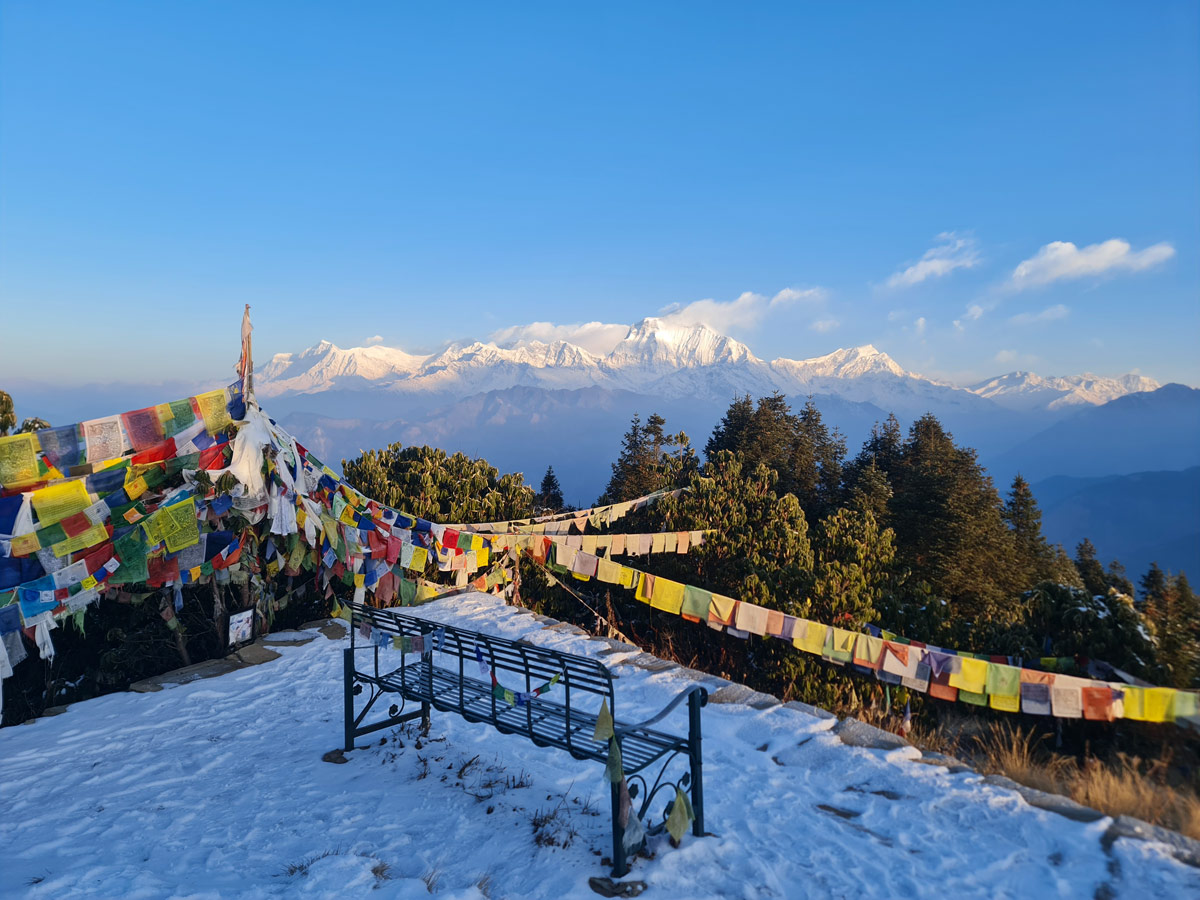
The main magic of Poonhill unfolds at dawn as you get to witness the majestic sunrise spectacle. From Poonhill during dawn, you will see Himalayan giants bathing in the breathtaking spectrum of orange hues.
You will be able to see peaks like the colossal Dhaulagiri and Tukuche Peak, followed by Annapurna I, Annapurna South, Hiunchuli, Machhapuchhre (Fishtail), and Manaslu to the far east.
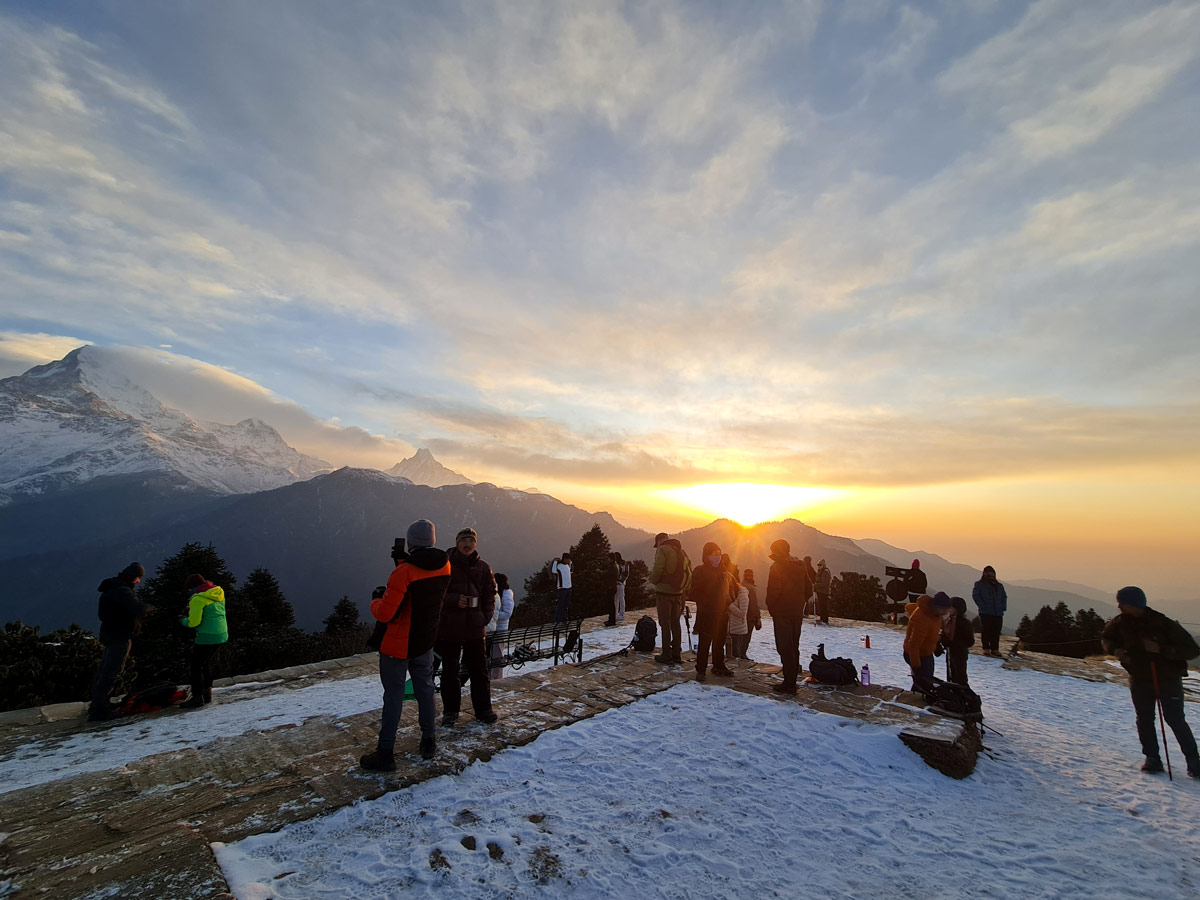
However, given the popularity and accessibility of the location, you might find a crowd of many fellow trekkers at Poonhill. So, be prepared to make your way through the crowd to experience the majestic view.
Khopra Ridge
Residing in the heart of the Annapurna region, Khopra ridge is located between Ghorepani and Tatopani at an altitude of 3,660 meters. This location can be accessed through the Khopra Danda Trek which is one of the famous treks in the Annapurna region.
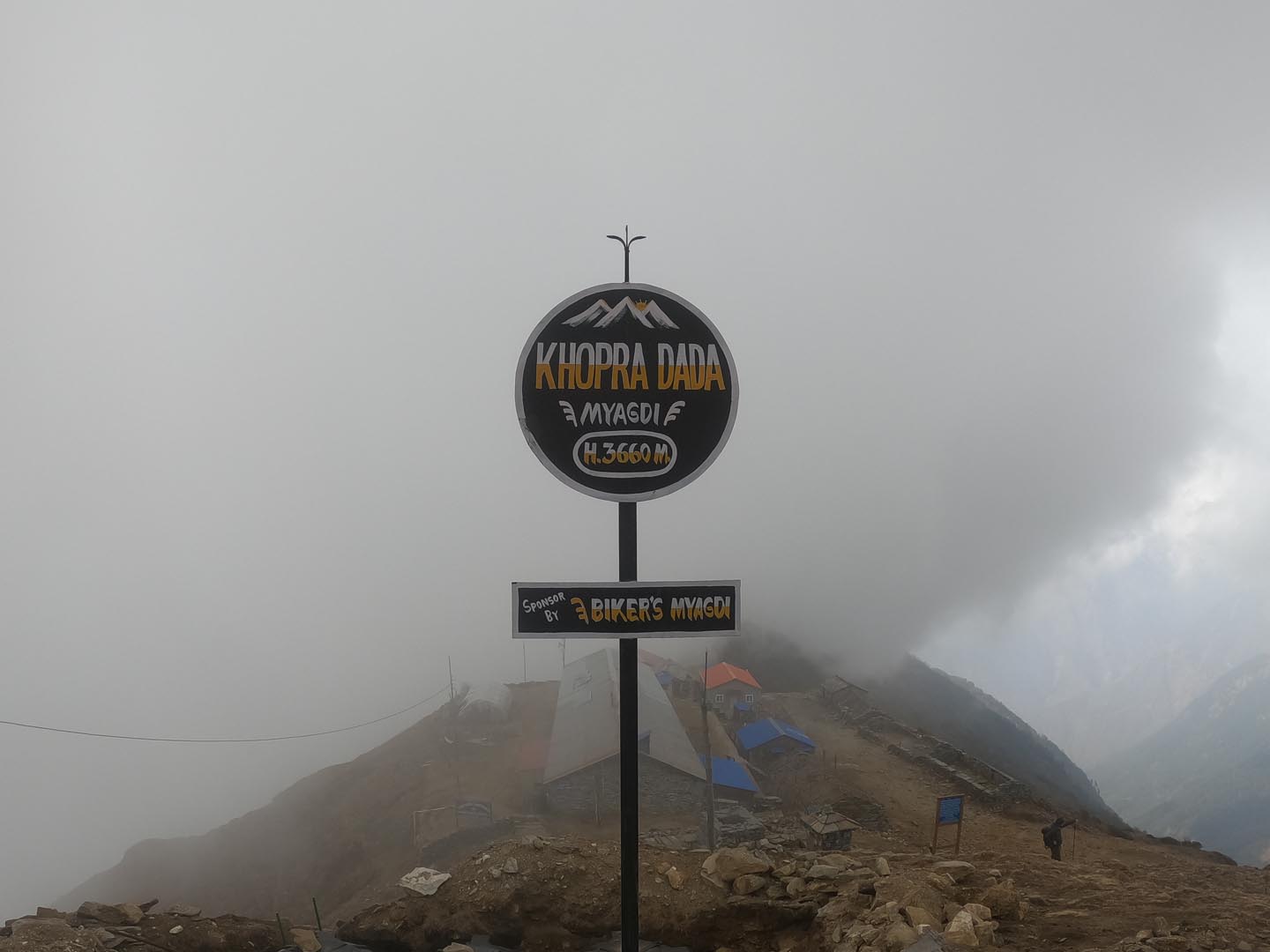
The Khopra Ridge features stunning panoramic views of the majestic peaks, surrounding valleys, as well as the lakes present in the region. You will also be able to witness the spectacular sunrise over Annapurna and Dhaulagiri.
From Khopra Ridge, you can see majestic peaks like Dhaulagiri, Annapurna I, Machhapuchhre, and Nilgiri, among others. The trek also includes Khayer Lake which is a sacred lake surrounded by high-altitude landscapes.
Mardi Himal Viewpoint
A relatively new and shorter trekking route in the Annapurna region, the Mardi Himal Trek also offers stunning viewpoint in the form of the Mardi Himal itself at the upper viewpoint.
To reach the viewpoint, you need to first reach the base camp of Mardi Himal at 4,000 meters followed by a hike of few hours which takes you to the upper viewpoint at approximately 4,500 meters.
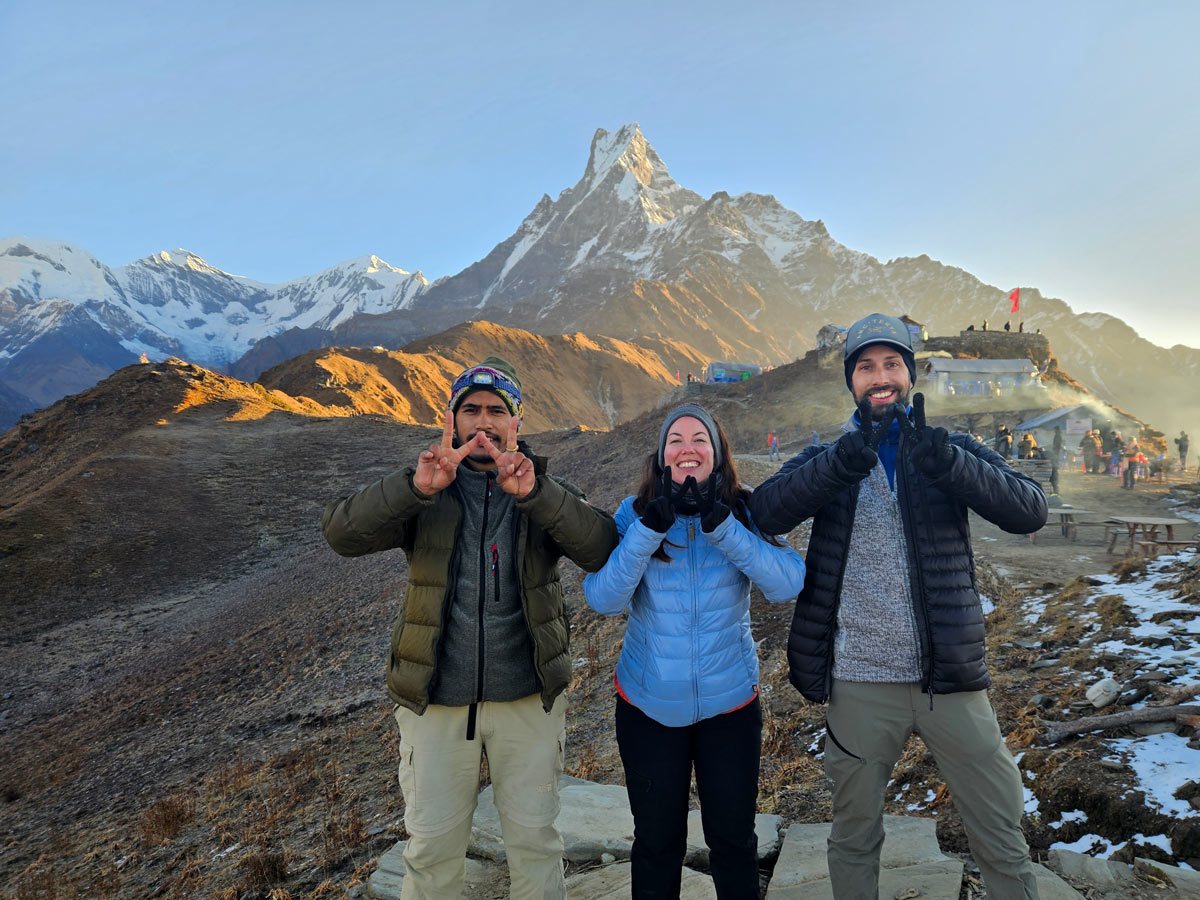
From here, you can get an incredibly close and direct view of the iconic Machhapuchhre, i.e. the ‘Fishtail’ mountain. You will be able to witness the majesty of the peak and its intricate details up close.
Besides that, the Mardi Himal also offers stunning views of surrounding peaks including Annapurna South, Hiunchuli, as well as the dramatic Modi Khola gorge below.
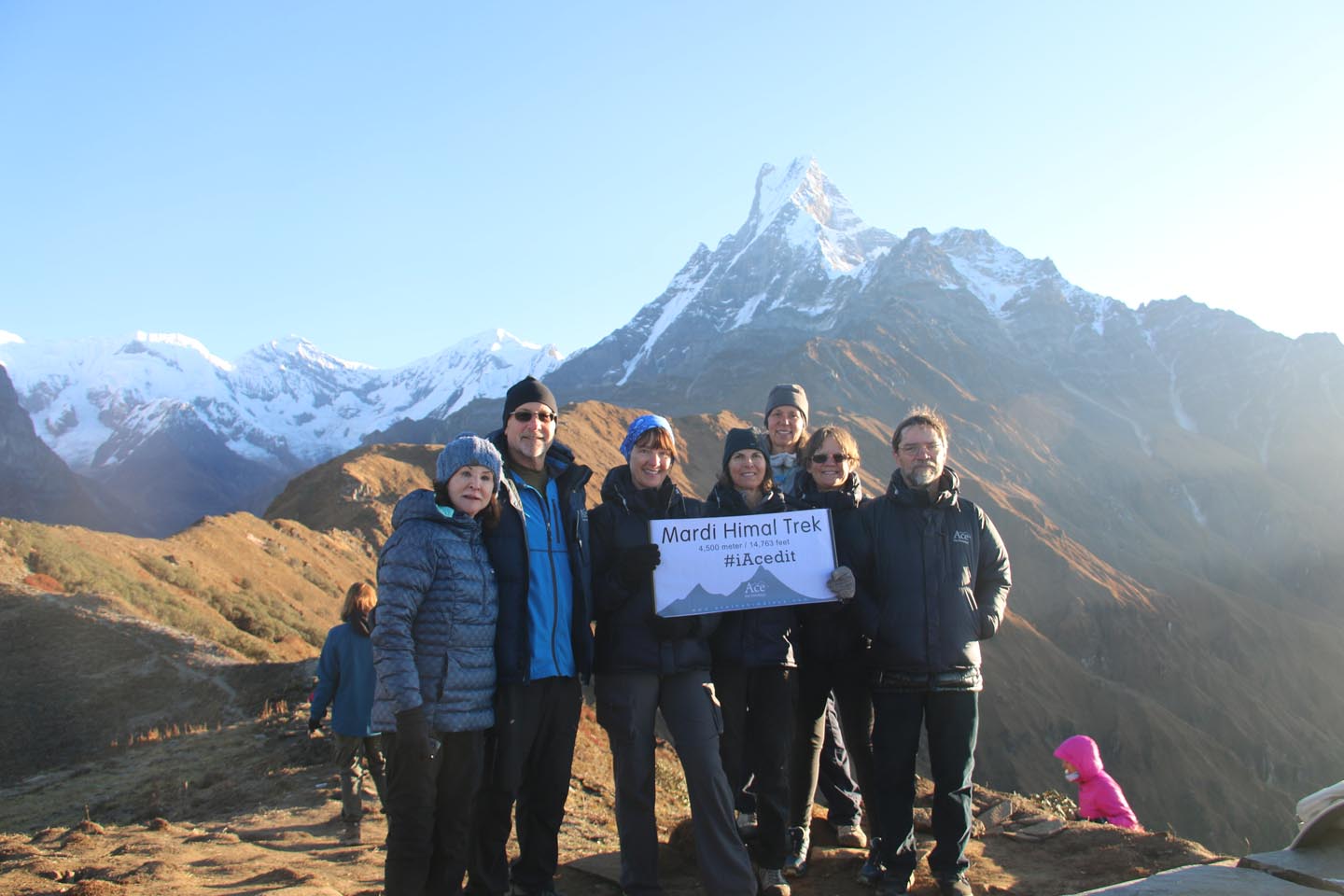
While reaching the base camp is quite easy, the ascent to the upper viewpoint can be equally challenging as the climb is steep. You will require a good level of physical fitness as well as prior trekking experience to witness the views from Mardi Himal.
Annapurna Base Camp
As we mention the viewpoints in the Annapurna region, the name that you cannot miss is of the iconic Annapurna Base Camp itself. This Annapurna Sanctuary is the ultimate amphitheater for stunning views in the Annapurna region.
This location is the ultimate goal of the famous Annapurna Base Camp Trek. Reaching the Annapurna Base Camp can be quite challenging. However, the views and the experience are absolutely worth the efforts.
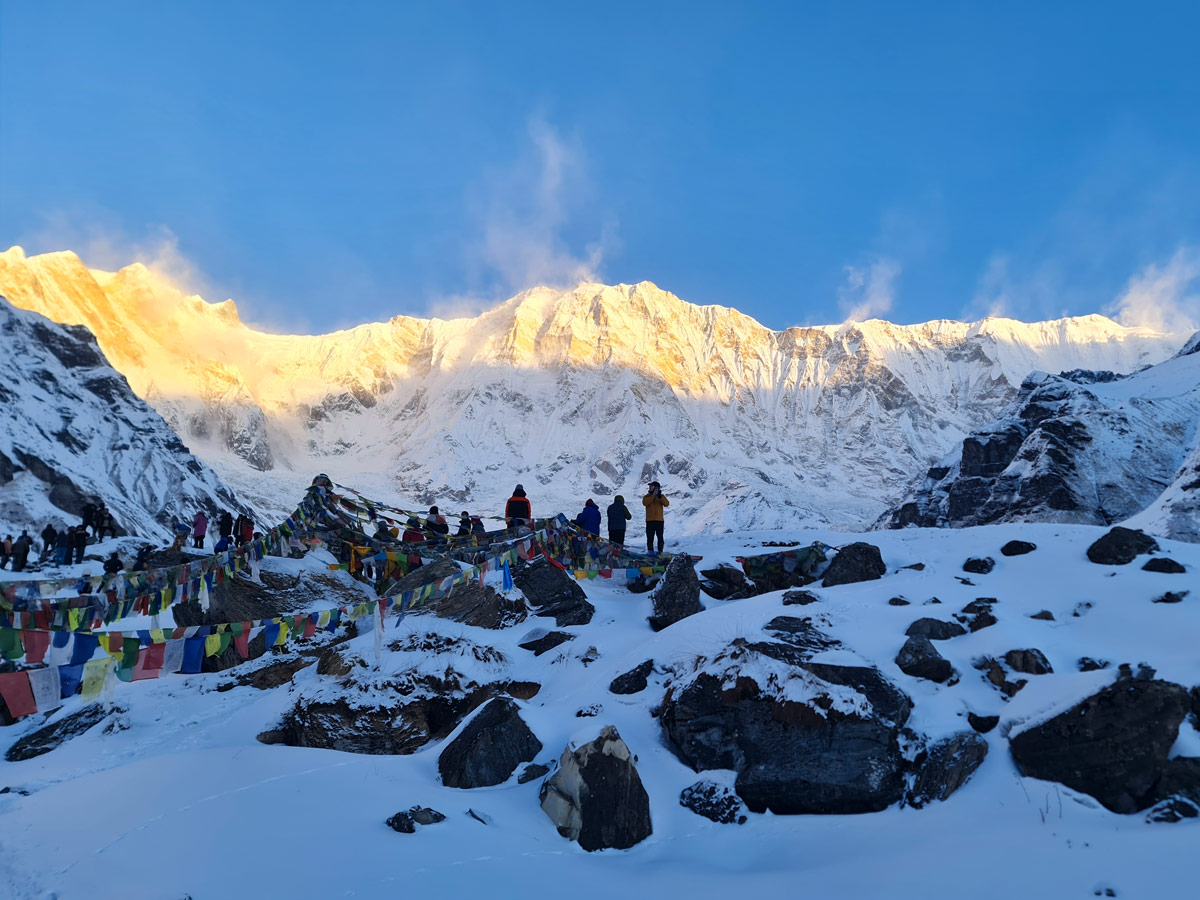
While the other viewpoints will get you a distant panorama of the stunning Himalayas, from ABC, you can get an experience of total immersion as you will be standing at the feet of the Annapurna range, surrounded by it on all sides.
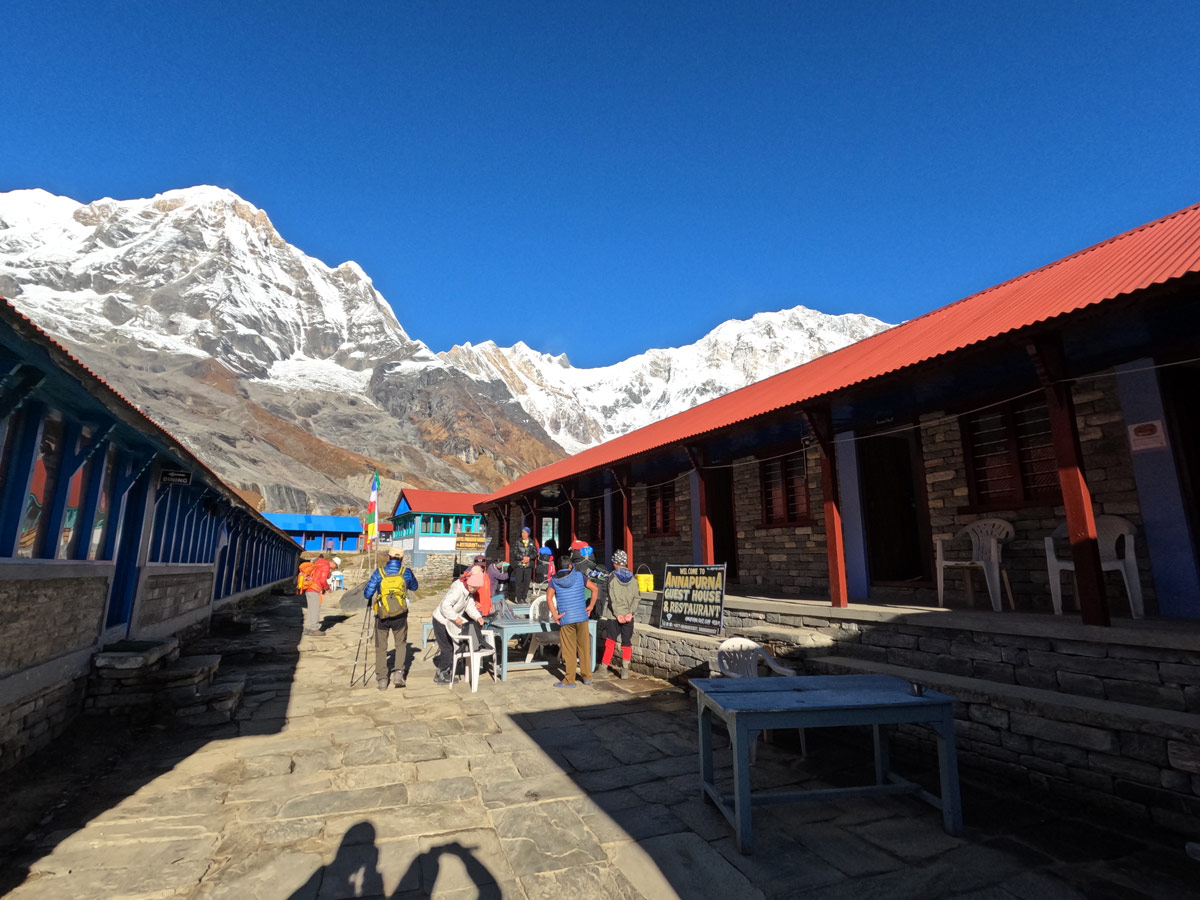
Annapurna I towers directly above you, while Annapurna South, Hiunchuli, Machhapuchhre, Gangapurna, and Glacier Dome encircle you while other glaciers shimmer nearby. As you are nestled amongst these colossal mountains, it is an experience words can barely describe.
You need to have a great deal of physical fitness, physical and mental preparation, as well as prior trekking experience to be able to bask in the views of the ABC. Make sure to acclimatize well so as to prevent altitude sickness.
Mohare Danda
A part of the Myagdi district, Mohare Danda is located at an elevation of 3,300 meters and it is an underrated extension of the more famous Ghorepani Poonhill Trek.
This location can be reached via a community lodge trek, and it is a great option for those seeking to experience the stunning views as well as the wonderful cultural exposure that the Annapurna region has to offer.
From Mohare Danda, you will see spectacular panoramic views of the Dhaulagiri range, Annapurna South, Machhapuchhre, and the surrounding rolling hills as well.
Not to forget, these hills are dotted with traditional Magar and Gurung villages and terraced farmlands which you can go and experience too. This makes the place emphasize equally on panoramas as well as interaction with local communities.
The experience here is unique because it combines the raw beauty of the mountains with the warmth of local hospitality, as you stay in community-run lodges and witness traditional dances, local cuisine, and the genuine warmth of the villagers.
Muldai Viewpoint
Muldai Viewpoint (3,637 meters) is a hidden gem that offers a serene and crowd-free vantage point in the Annapurna region. Located along the trail to Khopra Danda, this viewpoint rewards trekkers with sweeping views of Dhaulagiri, Annapurna South, Nilgiri, and Machapuchare.
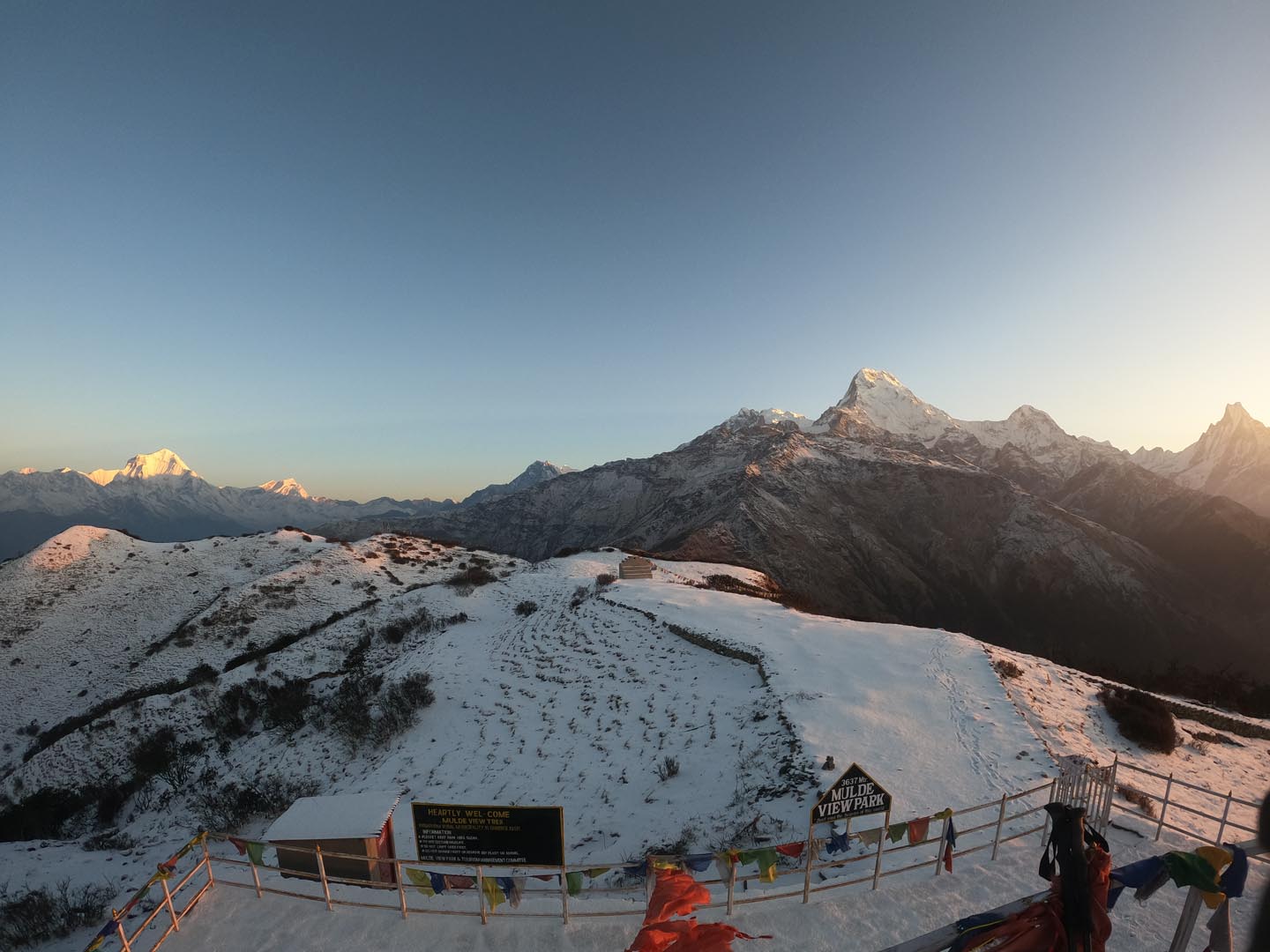
The short detour from Dobato takes you through peaceful forests and opens up to a panoramic ridge perfect for sunrise or sunset. Despite being lesser known than Poon Hill, Muldai provides an equally breathtaking experience with far fewer visitors, making it ideal for those seeking solitude with stunning Himalayan scenery.
Thorong La Pass
One of the highest walkable mountain passes, the Thorong La pass is one of the many passes of the Annapurna region as well as the ultimate challenge that you will come across here.
This pass is a part of the famous Annapurna circuit trek, and it takes you to a challenging altitude of 5,416 meters which is really tough and adventurous even for seasoned trekkers.
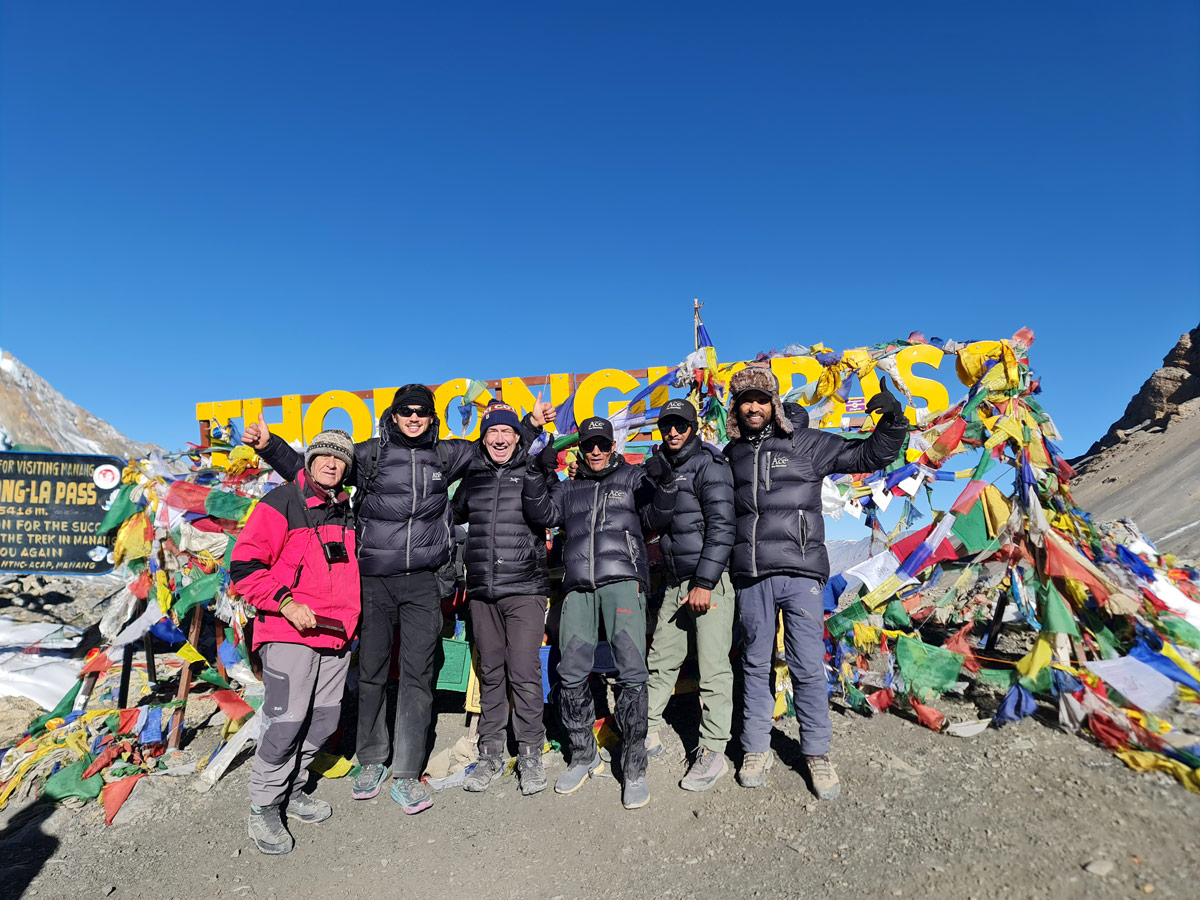
As tough as the task of conquering the Thorong La Pass is, the views from here are equally rewarding if not more. From the top of the peak, you will get some of the most majestic views.
Expect stunning panoramic views of the Annapurna Himalayan range, including iconic peaks like Annapurna I, II, III, and IV, as well as Manaslu, Dhaulagiri, and Gangapurna.
However, if you have Thorong La Pass on your trekking itinerary, make sure to start your preparations months in advance and get your physical and mental state extremely strong. Also learn everything there is to learn about acclimatization.
Ice Lake
A unique experience as well as a stunning viewpoint in the Annapurna region, Ice Lake or Kicho Tal is another great location that you can add to your itinerary. This lake is located at an altitude of 4,600 meters.
While reaching here can be slightly challenging as compared to other viewpoints, the experience here is equally majestic. This lake can be undertaken as a side trip from Manang in an almost 5 to 6 hours roundtrip.
This is a great high altitude alpine lake which is almost always frozen except in the more warmer months ranging from May to October, hence the name ice lake. It is one of the acclimatization hikes from Manang.
When melted, the lake features crystal clear turquoise waters which reflect the stunning Himalayan giants surrounding it including Annapurna I, Annapurna II, and Gangapurna.
Therefore, you will be able to see not just the stunning views of these peaks from the majestic Annapurna range, but also their mirror image which makes the experience even more enhanced.
Tilicho Lake Viewpoint
Last on this list among the many viewpoints in the Annapurna region is the iconic Tilicho Lake located at an altitude of 4,919 meters. This lake is known as the highest alpine lake in the world.
This is again one of the acclimatization hikes from Manang which can be completed in a couple of days. It is made out of the Tilicho Peak which is a part of the staggering Annapurna range.
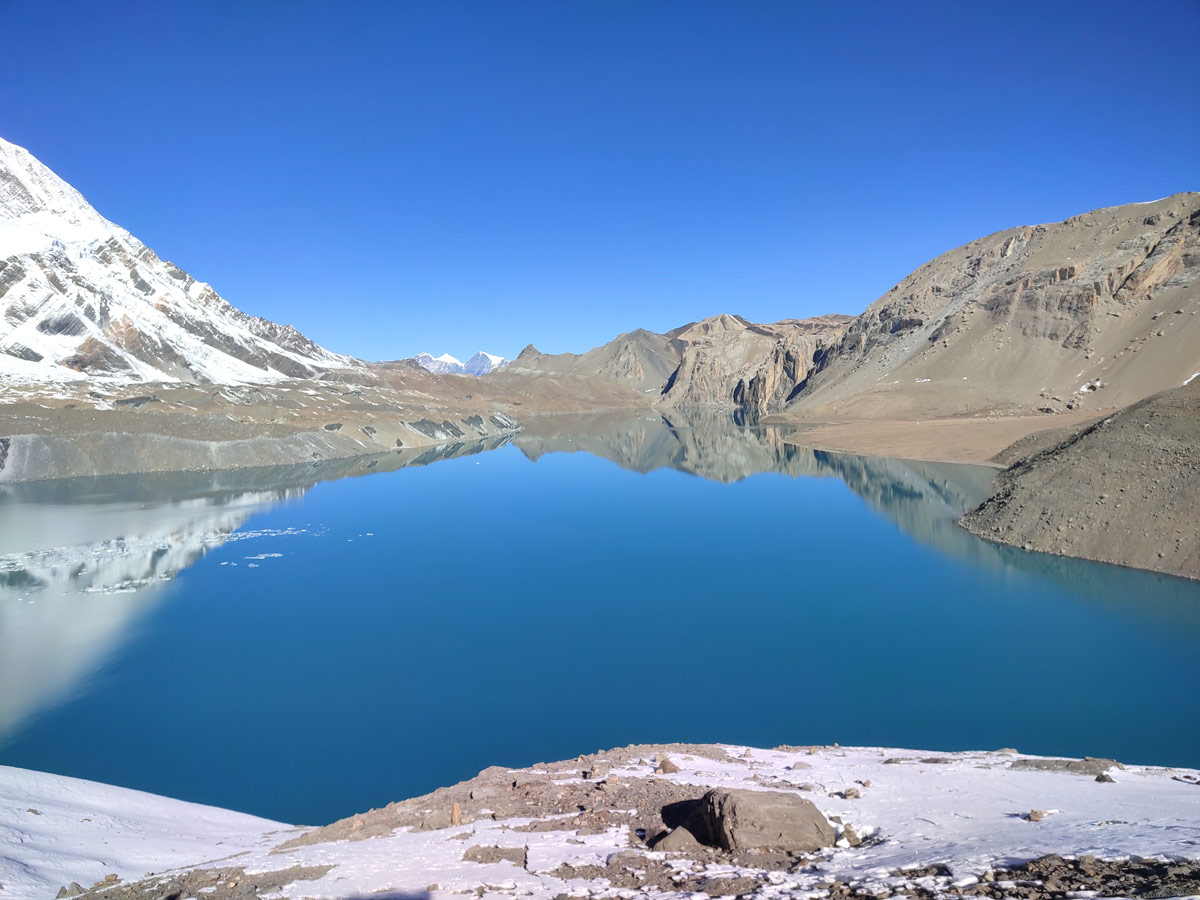
Tilicho Lake offers breathtaking views, surrounded by towering snow-capped mountains like Tilicho Peak, Nilgiri Peak, and framed by the majestic Annapurna Range that stretches across.
The lake itself is known for its crystal-clear, turquoise waters which create a serene and otherworldly atmosphere reflecting the surrounding peaks and their majesty.
Some of the major mountains that you can see from the Tilicho Lake and on the way include Annapurna, Annapurna II, Annapurna IV, Dhaulagiri, Nilgiri Peak, and the Tilicho Peak itself.
Safety Tips for People Exploring the Viewpoints in Annapurna Region
- Never rush your ascent and maintain a slow yet steady pace and ascend gradually. Follow a planned itinerary that includes gradual altitude gain.
- Take dedicated rest days for acclimatization. If possible, trek to a higher point during the day and return to a lower elevation to sleep.
- Be aware of the signs of Acute Mountain Sickness (AMS) like headache, nausea, dizziness, fatigue, loss of appetite, difficulty sleeping. Also be aware of how to prevent altitude sickness.
- Weather in the Himalayas can change rapidly. Wear multiple layers that you can easily add or remove. Always carry a waterproof and windproof jacket and trousers, even on clear days.
- For viewpoints like Poon Hill, embark early in the morning to ensure clear views before clouds often roll in later in the day. Also check forecasts before you head to the viewpoint.
- Prepare well in advance with cardiovascular exercises (running, swimming, cycling) and strength training (especially legs).
- Drink plenty of water throughout the day, even if you don’t feel thirsty. Aim for 3-4 litres daily. Eat regular, balanced meals. Don’t skip meals.
- Carry headlamps and torches which are crucial for early morning ascents to viewpoints (like Poon Hill or Mardi Himal Upper Viewpoint) and navigating trails in the dark.
- Pack a personal first aid kit with blister plasters, antiseptic wipes, pain relievers, any personal medications, and rehydration salts.
- Stick to the designated trekking paths. Veering off trail can lead to getting lost, encountering hazardous terrain, or disturbing local wildlife.

